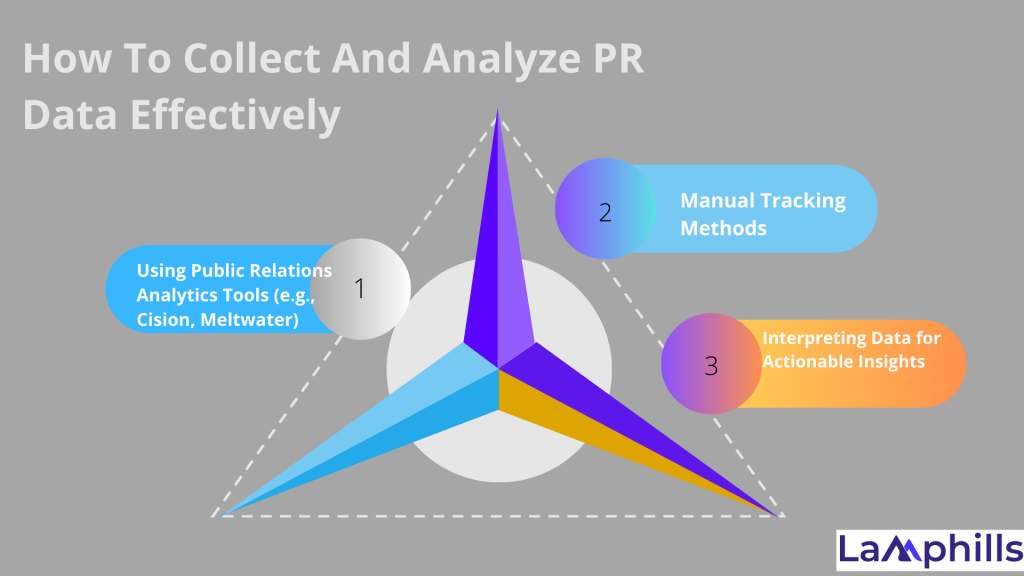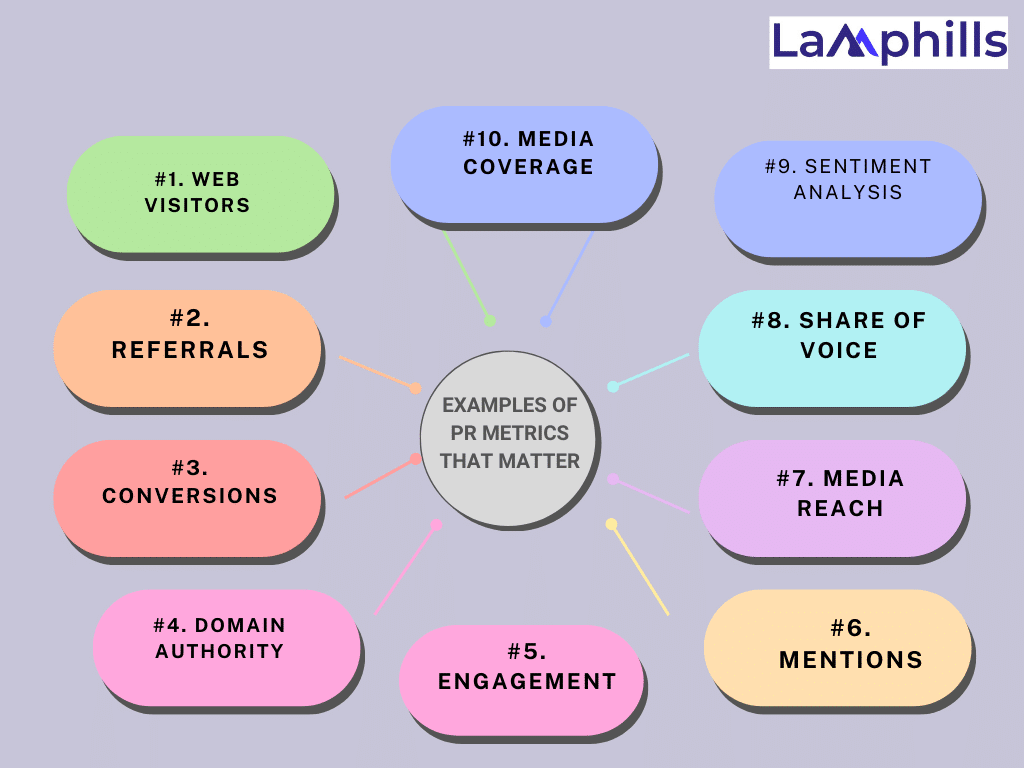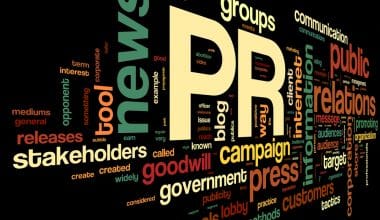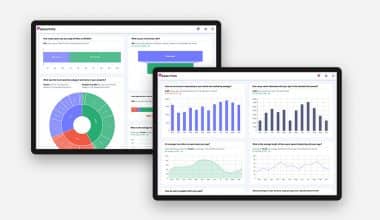You cannot enhance anything if you cannot measure it. Measuring PR campaigns allows you to track your progress and determine what you should be doing more (or less) to succeed. As an agency or PR professional, you can use the results of a PR campaign to earn a place at the table. With the correct performance metrics, you can fine-tune communication strategies and demonstrate how much your PR efforts contribute to overall brand success.
Public relations (PR) is generally regarded as a mysterious art—after all, how do you quantify the value of good press, positive mentions, or that intangible thing we call “buzz”? But for businesses, tracking and analyzing PR campaign impact is far from an abstract concept. It’s about knowing which efforts are paying off and which ones need adjustment. Let’s dive into the PR metrics that truly matter and how to use them to measure your campaign’s success.
Key Takeaways
- If you can’t measure your PR efforts, you can’t improve them. Accurate measurement allows PR professionals to refine their strategies, demonstrate value to clients, and make data-driven adjustments for better outcomes.
- Using PR metrics provides tangible evidence of campaign success. It moves PR from being a “mysterious art” to a quantifiable contribution, showcasing how specific PR efforts impact overall brand visibility and engagement.
- Tools like Cision and Meltwater can significantly enhance PR tracking, offering comprehensive analytics for mentions, sentiment, and media reach. They streamline data collection, making it easier to analyze PR impact.
- For those without access to high-end tools, manual methods like Google Analytics and spreadsheets can still provide valuable insights into website traffic and media coverage. This approach allows even smaller teams to track their impact.
- Identifying key metrics that align with business objectives—such as brand awareness or conversion rates—enables PR teams to focus their analysis on what truly matters, helping to optimize campaigns for better results.
What Are PR Metrics?

When I initially started in public relations, it seemed like I was trying to catch wind. We’d have these fantastic media articles and thrilling press releases, but when asked about the campaign’s impact, I’d often fail to provide precise responses. It wasn’t until I started paying attention to precise data that I was able to reliably demonstrate the effectiveness of our efforts. Tracking PR metrics means you’re not just tossing darts in the dark; you have genuine, tangible evidence of your success.
PR metrics refer to the process of determining the effectiveness of public relations initiatives and activities. It can be used to evaluate the effectiveness of media coverage, social media participation, and other communication strategies.
PR metrics are significant because they let organizations assess the efficacy of their public relations initiatives and operations. Organizations can establish whether their public relations activities are effective by evaluating the impact of media coverage, social media engagement, and other communication strategies.
Finally, top PR metrics are vital for ensuring effective and efficient public relations campaigns. By using PR metrics, organizations can save time and money while also ensuring that their communications efforts are having the desired effect.
How To Collect And Analyze PR Data Effectively

Tracking and analyzing public relations data may appear overwhelming at first, but it is similar to being a detective. You collect information (data), search for patterns (trends), and make decisions based on what you discover (strategies). Over the years, I’ve discovered that combining the correct tools with a deliberate approach to analysis can make all the difference. Let’s look at how to properly collect and evaluate your public relations data using a combination of high-tech tools and good old-fashioned manual tracking.
#1. Using Public Relations Analytics Tools (e.g., Cision, Meltwater)
When I first started in public relations, I used spreadsheets and Google Alerts to monitor mentions, coverage, and engagement. It was gradual but effective—up to a point. Our public relations efforts expanded, and I quickly realized that I needed something more robust. That’s when I discovered specialized PR analytics tools like Cision and Meltwater. These platforms are like having a turbocharged PR engine under the hood, helping you track every mention, sentiment, and media reach all in one place.
Cision and Meltwater are some of the big names in the PR analytics space, offering comprehensive dashboards that let you monitor media mentions, social media engagement, and even competitor activities. They provide insights into where your brand is being talked about and the tone of those mentions (positive, neutral, or negative).
#2. Manual Tracking Methods
Not every company has the budget for Cision or Meltwater, and that’s fine. Sometimes the tried-and-true approaches are just as effective. Before I had access to advanced software, I depended primarily on manual tracking methods. I utilized free tools like Google Analytics and a trusty spreadsheet to track our media coverage and its influence on website traffic and social media engagement.
Google Analytics is an excellent (and free) tool for analyzing how public relations activities increase visitors to your website. For example, if you launch a public relations campaign and include a particular link in your press release, you can measure how many people clicked on it, where they came from, and what they did on your site. This gives you a sense of whether the campaign is driving the right kind of traffic.
Setting up Google Alerts can also help you track internet references of your company. Combine this with a spreadsheet to create a rudimentary tracking system. I’d record the publication, link, date, and mood of each mention, whether favorable, negative, or neutral. It was tiresome, but it provided me with a clear picture of how our brand was perceived.
#3. Interpreting Data for Actionable Insights
Collecting data is only the first step. The true magic emerges when you convert those figures into practical insights that can guide your public relations approach. This is where I discovered the distinction between being data-rich and insight-poor. In other words, having a lot of data is excellent, but if you don’t know what to do with it, it becomes clutter.
One of the best ways to draw insights from your PR data is to focus on a few key metrics that align with your goals. For instance, if you’re launching a new product, you might focus on website traffic, conversion rates, and media sentiment. If your goal is more brand awareness, impressions and share of voice might be more important.
Finally, remember that collecting and evaluating public relations data is more than simply a duty to complete; it is a powerful instrument that can drive your strategy, assist you in making better decisions, and ultimately demonstrate the value of your public relations efforts. Whether you use complicated tools like Cision or keep things simple with a spreadsheet, consistency, attention, and a willingness to learn from the data are essential. So don’t be hesitant to go into the data—it could lead you to your next major PR victory.
How Do You Measure PR Performance?
A media monitoring tool is required to accurately measure public relations (PR). A solution like that will allow you to closely monitor key performance indicators and measure the influence of public relations on your organization. Measuring campaign success without a media monitoring technology would be a difficult and time-consuming undertaking.
First, create a project and select the phrases you want to monitor. Once you’ve decided on keywords (think corporate hashtags, campaign-specific hashtags, or terms linked to the industry you’re interested in), you’re ready to assess the PR campaign. If you want to have a substantial impact on your company’s bottom line, you need to prepare to run and measure the results of your work.
- Planning
The first step to a successful PR campaign is planning. Without clearly defined, measurable goals, you won’t be able to assess your PR campaign and improve your communications and business goals. Once you know what you want to achieve, you could prepare a PR strategy to achieve your goals. Check the sentiment around your new service or product. Assess the success of a campaign. Before you start your PR activities, invest your time in setting your goals.
- Tools
Remember to set up all the tools you’re going to use in advance, even if that’s just an Excel spreadsheet. First of all, you will minimize the risk of failure. Imagine coming up with a great PR campaign that won’t be measured because the tool wasn’t working. Even so reliable tools as Google Analytics can fail you. Ouch. From my experience, it’s better to have everything tested before the start of a campaign. The “better safe than sorry” rule applies to measuring PR campaigns as well.
Examples Of PR Metrics That Matter

In the field of public relations, measuring the whole impact of a campaign can be tricky. However, any PR staff must discover ways to illustrate the results of their work. If campaign results cannot be accurately measured, it is difficult to determine their value and develop effective goals based on the progress made thus far. The following metrics are used to determine whether or not a public relations effort was effective.
#1. Web Visitors
Once, a feature in a specialist industry newspaper increased traffic to our client’s website above our expectations. We studied the audience and discovered that they were highly focused and interested in the client’s particular business. This experience taught me that sometimes a small but focused media placement might generate more qualified traffic than a post for a general readership.
For example, if you’ve just secured a press release in a top-tier publication, your traffic should increase as people read about your brand. Important to know is that, when monitoring PR metrics over digital channels, your data is coming from different types of visitors. Each is a unique individual.
Semrush Traffic Analytics is an online management software that you may use to fine-tune your traffic acquisition plan. Semrush allows you to do an analysis to identify where your rivals’ traffic is coming from, as well as track the behavior of your own visitors. You could also take a deeper look into your niche to use historic traffic data to plan your next move along with consumer trends.
#2. Referrals
A referral is how someone gets to your website, and traffic analytics solutions may display how many people come through your various media channels. Keep in mind that when you are mentioned in an online magazine, there may not always be a link to your website included, and some people may go directly to your website via search.
It is critical to understand where your traffic is coming from because you don’t want to waste time or money on publications, platforms, and channels that will not aid your PR efforts.
It’s good to know where your earned media and paid media is getting you in terms of referrals. The goal of PR is to attract the right kind of traffic, not necessarily to increase site traffic. So, PR managers should use their media connections to establish relevant and worthwhile referrals.
- How to measure referrals
Google Analytics has limited ability to correctly measure referrals. However, you may still use referral reports to keep track of your company listings, social media traffic, and organic search traffic.
When your PR efforts result in an online publication, you will frequently receive a hyperlink to your website. These will also appear on your referral report. Backlinks allow you to track the impact of public relations and see how it adds value.
#3. Conversions
A conversion happens when a site visitor acts on your call to action. Usually performing a business transaction with you, for example, making a purchase. Here, closing clients and winning business deals is a coveted result of PR efforts and the ultimate measurement of success. Conversions can be difficult to calculate; however, you can roughly calculate the average amount of conversions you need from qualified leads by consulting your sales data.
- How to measure conversions
With Google Analytics and a customer relationship management (CRM) system, you can easily identify how many daily site visitors you need to attract. From here, you can calculate how many customers to convert to grow your business.
#4. Domain Authority
Domain authority describes a website’s significance to a given topic area or sector. A search engine ranking processor calculates your score, which indicates how likely it is for a website to appear in search engine results. Domain authority is measured in percentages: 40 to 50 is medium, 60 is outstanding, and more than 60 is exceptional.
When seeking to rank against competitors, you must consider your domain authority score. Your score demonstrates the legitimacy of your website, which influences how you rank versus competitors. Even if your score is low, as long as it is greater than your competitors, your website might remain highly prominent.
Your score is influenced by the quality and relevance of your material. centrality, which is how strong the network of backlinks and external links is between your website and others.
#5. Engagement
Engagement is a metric that measures how invested your audience is in your content and may be assessed through a variety of activities such as likes, comments, and shares. A high engagement rate indicates that you have a robust, receptive audience that finds your material fascinating, entertaining, or valuable. Engagement measures your audience’s involvement with your content and how they like to interact with your business.
You can always track likes, comments, and shares. However, you can also delve further into the descriptive data of how and why people engage with your content. This depends on your customized reasons for tracking engagement.
- Likes, comments, shares etc. These are individual metrics that can be measured.
- Post engagement rate. Number of people who interact with content divided by the amount of people who saw it.
- Organic mentions, where your brand is mentioned without prompting is a good sign of brand awareness.
- Time on Page/Bounce Rate: Indicates the engagement level of visitors who come to your site through PR-driven channels.
- How to measure engagement
Engagement can be tracked using the analytics tools provided by the platform in question. For instance, Instagram and Facebook Insights. It will not only serve to demonstrate the success of a PR plan, but it will also emphasize the material with which people are engaging.
You may identify the type of material that your audience appreciates and which website pages do well by analyzing engagement. This allows you to modify your content to be more successful from the start.
#6. Mentions
A mention occurs when a brand is referred to in the media or discussed on the internet. Mentions are typically limited to social media, although they can also include online newspapers and blogs. This is a type of informative metric because it helps quantify brand presence and includes PR initiatives. Mentions can help you establish good visibility while also providing extra insights into what customers think about your brand and trends.
Favorable remarks in public relations boost your brand’s organic search value. Mentions also have an impact on your brand’s trustworthiness, so keep track of what others are saying about you. About brand mentions, it’s important to note:
- Volume of Mentions: Tracks how often your brand is mentioned across various media platforms.
- Mentions by Influencers: Measures the impact of mentions by key industry influencers and opinion leaders.
Mentions count each time you’re referred to in the media. Mentions from social media, online publications, and blogs can all be counted. You want to know how frequently you’re mentioned and in what light.
- How to measure mentions
Google Alerts is an online source that can notify you about new results across the entire web. However, it is limited in some ways. For social streams, Hootsuite allows you to monitor conversations relevant to your business, industry, and products. You can monitor what people are saying based on keywords, hashtags, and locations, and even make it more specific to unique users.
#7. Media Reach
If your goal is to increase brand awareness (let’s be honest, we can’t think of any reason why it wouldn’t be), then certain media reach metrics can provide some tangible solutions to lock down and give evidence of this rather slippery quality. Measuring awareness has always been rather tricky; however, with developing metrics, this is no longer the case. We can now measure both impressions and reach.
- How to measure media reach
It is preferable to measure media reach alongside more particular criteria sets, such as follower growth or improved organic search results. Your PR campaign might be broadly distributed, but it must produce strong outcomes in terms of your campaign objectives. Not just for placements.
You may track referral traffic, which is traffic that arrives at your website via a link from another domain. This will demonstrate the success of your placements and whether they are advantageous to achieving your PR objectives. Referral traffic is more accurate than impressions and reach since it measures platform relevance and content quality.
#8. Share Of Voice
Share of Voice evaluates how much of the media landscape your brand dominates in comparison to competitors. Imagine you’re at a conference and everyone is talking about your company; that’s a high SOV. For example, if your brand accounts for 40% of all industry mentions in major periodicals and social media, this is your SOV.
Tracking SOV over time assisted one of my clients in determining an important insight: their brand was mentioned more frequently than competitors, but the emotion was generally neutral. This allowed us to adjust our narrative, focusing on topics that would elicit a more positive reaction, such as emphasizing community efforts or business culture.
- How to measure SOV
To calculate SOV, simply do the following:
Brand metric / total market metric x 100
So, for example, when measuring SOV for Instagram or LinkedIn:
SOV = branded hashtags / total branded hashtags of whole market x 100
SOV = branded hashtags / total branded hashtags of whole market x 100
The same formula applies to other metrics (organic keywords, impressions, revenue). Several platforms can calculate this for you. Some of the best include Meltwater, Muck Rack, and Prowly. But there are a lot of others.
Interesting to see will be how your sov is impacted after a particular PR campaign. So monitor before and after and see what needs a tweak or a revamp. SOV is a valuable data reference tool to show to your stakeholders.
#9. Sentiment Analysis
Yes, you can measure how consumers feel about your brand. Tools can now examine the words used in online discussions about you. This will allow you to better understand the level of media coverage you are receiving.
Sentiment analysis determines if media coverage is positive, negative, or neutral, as well as whether people associate positively with you. It assesses how effectively essential messages are communicated in the coverage.
It isn’t just words either. Emoji can also be analyzed. The cheerful face emoji can help firms identify your level of satisfaction and loyalty. What should I do if it is negative? If it’s negative, it may be a warning of a threat to your reputation, which could turn into a crisis. So, look into what’s being said about you and act accordingly.
- How to measure sentiment analysis?
Among the ways to assess sentiment is by using sentiment scores. Words, the type of language, the context used, and frequency can all be plugged into to calculate a sentiment score. These can assess emotions in the text by using a scaling system that runs from 0 to 10, where o is negative and 10 is positive. There may be slight variations in the tools, of course.
#10. Media Coverage
Analyzing your company’s media coverage is critical. Linking earned media coverage to public relations outreach can help improve PR initiatives. However, not all media coverage is created equal. And it all depends on your ambitions. To make your campaign successful, you must first determine who you want to reach and then target the appropriate outlets.
If you’re a well-established brand, being published in a small online outlet is unlikely to have much of an influence, yet being included in a highly respected journal may not benefit you if the readership isn’t very relevant to your approach. It’s not always a numbers game either. Getting published in many smaller industries.
- How to measure media coverage
As I previously stated, when it comes to media attention, relevance is critical. Some businesses utilize a media quality score (MQS). It is a numerical rating that measures an outlet’s credibility and influence. It can be determined by the amount and type of audience it attracts, its reputation, or its domain authority. The higher the score, the more likely your coverage was to have an influence on your target audience. An MQS can be calculated using a tool like Meltwater.
You can also do this manually. For example, coverage in a top-tier publication receives 5 points, an online item receives 3 points, a story with a link to your website receives 2 points, and so on.
Effective measuring of media coverage should also involve tracking the source of your coverage. It could have stemmed from an email campaign, a targeted pitching effort, or a contact at a publication. One thing you should take away from your media coverage is the ‘why.’ Identifying why someone covered your story is key to determining whether your PR campaign was effective and informing your future PR strategy.
Why are metrics important for PR?
Why should you invest time and resources into measuring your PR efforts? The benefits are hard to miss!
There are multiple reasons why you need to measure the value of your paid, owned, and earned media:
- to prove the value of your work to your superiors. PR can help you reach your business objectives, but you have to demonstrate the benefits of your work
- measuring various PR campaigns will help you identify the strengths and weaknesses of your actions. That way you could improve your next campaigns
- constant monitoring of your brand will help you defend your business during the crisis. If you want to know more, take a look at our article about crisis management.
What is the difference between PR value and Ave?
Advertising Value Equivalency (AVE) measures the cost of media space if it were bought as an advertisement. It quantifies the size of coverage but overlooks the value of credibility and influence of earned media.
In contrast, PR value assesses the overall impact of a PR campaign, including brand recognition, trust, and audience engagement. It factors in qualitative elements like sentiment and relevance.
Conclusion
PR metrics are about more than just showing your worth; they also provide the knowledge you need to fine-tune your plan and build your business. By focusing on the relevant data points, you can figure out what’s working, what isn’t, and where your next PR success might come from.
So, the next time you execute a public relations campaign, remember that metrics are more than simply statistics; they are the road map that will lead you to success. Every execution in your PR plan should have a measurable aim; otherwise, you will miss out on growth opportunities from your investments in public relations management. PR is about establishing brand authority, which leads to money.
References
Related Articles
- Real-Time Marketing Campaigns: Best Practices and Examples for Instant Success
- Top Social Media Advertising Metrics Every Marketer Should Track in 2024
- 9 Important Link-Building Metrics You Should Measure and Track for Your Campaigns
- Top 15 App Analytics Tools in 2024: A Detailed Review of Features and Benefits






